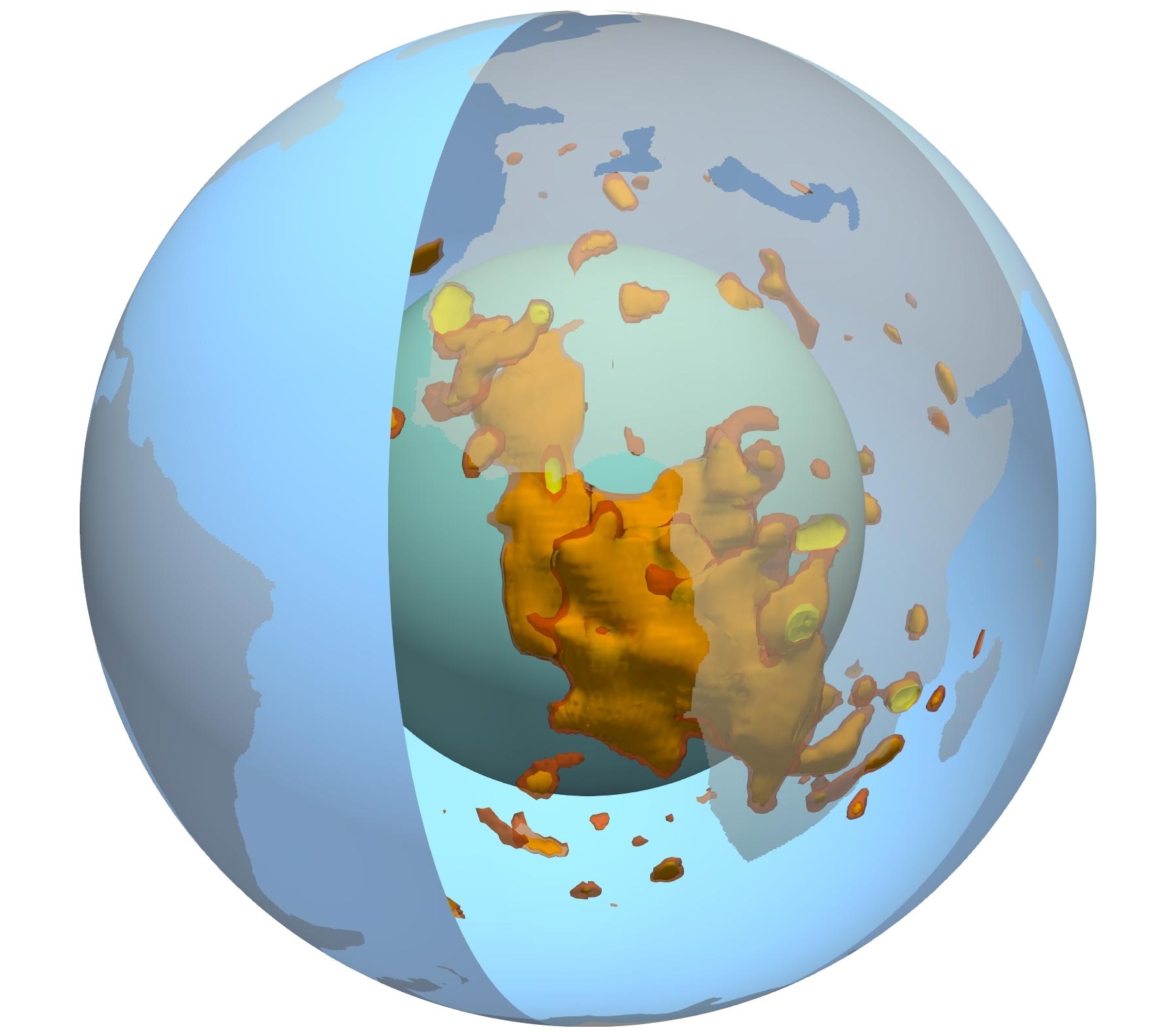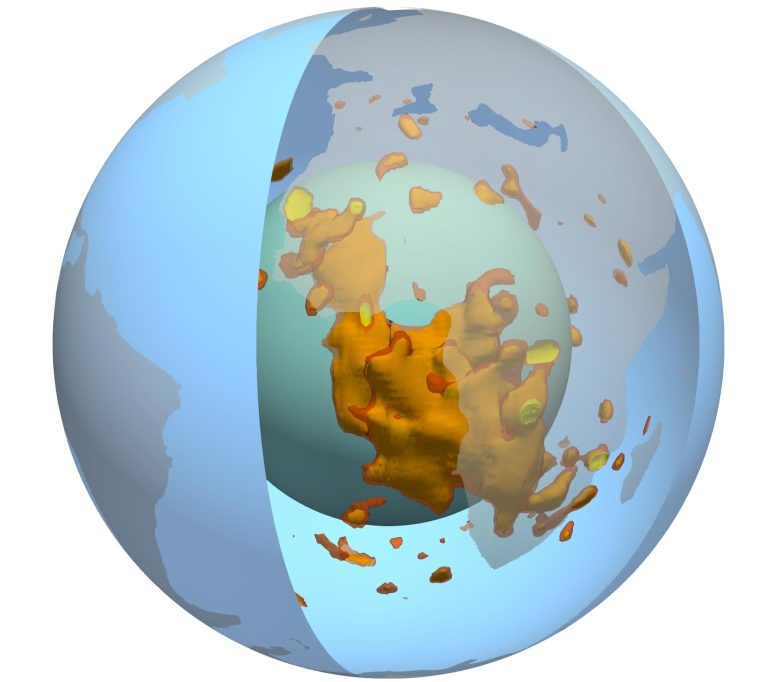

Vedere 3D a punctului din mantaua Pământului de sub Africa, prezentată în roșu, galben și portocaliu. Cyanul reprezintă limita principală a mantalei, albastrul indică suprafața, iar griul transparent indică continentele. Credit: Mingming Li / ASU
Pământul este stratificat ca o ceapă, cu o crustă exterioară subțire, o manta groasă și lipicioasă, un miez exterior lichid și un miez interior solid. În interiorul mantalei, există două structuri masive în formă de puncte, aproximativ de fiecare parte a planetei. Punctele, denumite oficial provincii mari cu viteză redusă (LLSVP), au fiecare dimensiunea unui continent și de 100 de ori mai înalte decât Muntele Everest. Unul este situat sub continentul african, celălalt sub Oceanul Pacific.
Folosind instrumente care măsoară undele seismice, oamenii de știință știu că aceste două bulburi au forme și structuri complexe, dar în ciuda caracteristicilor lor notabile, se știe puțin despre motivul pentru care există bulburi sau despre ce a dus la formele lor ciudate.
Oamenii de știință de la ASU Qian Yuan și Mingming Li de la Colegiul de Explorare a Pământului și Spațiului și-au propus să afle mai multe despre aceste două puncte folosind modelarea geodinamică și analizele studiilor seismice publicate. Prin cercetările lor, ei au reușit să determine înălțimea maximă pe care o ating blob-urile și modul în care dimensiunea și densitatea blob-urilor, precum și vâscozitatea înconjurătoare în manta, le pot controla înălțimea. Cercetarea lor a fost publicată recent în
The results of their seismic analysis led to a surprising discovery that the blob under the African continent is about 621 miles (1,000 km) higher than the blob under the Pacific Ocean. According to Yuan and Li, the best explanation for the vast height difference between the two is that the blob under the African continent is less dense (and therefore less stable) than the one under the Pacific Ocean.
To conduct their research, Yuan and Li designed and ran hundreds of mantle convection models simulations. They exhaustively tested the effects of key factors that may affect the height of the blobs, including the volume of the blobs and the contrasts of density and viscosity of the blobs compared with their surroundings. They found that to explain the large differences of height between the two blobs, the one under the African continent must be of a lower density than that of the blob under the Pacific Ocean, indicating that the two may have different composition and evolution.
“Our calculations found that the initial volume of the blobs does not affect their height,” lead author Yuan said. “The height of the blobs is mostly controlled by how dense they are and the viscosity of the surrounding mantle.”
“The Africa LLVP may have been rising in recent geological time,” co-author Li added. “This may explain the elevating surface topography and intense volcanism in eastern Africa.”
These findings may fundamentally change the way scientists think about the deep mantle processes and how they can affect the surface of the Earth. The unstable nature of the blob under the African continent, for example, may be related to continental changes in topography, gravity, surface volcanism and plate motion.
“Our combination of the analysis of seismic results and the geodynamic modeling provides new insights on the nature of the Earth’s largest structures in the deep interior and their interaction with the surrounding mantle,” Yuan said. “This work has far-reaching implications for scientists trying to understand the present-day status and the evolution of the deep mantle structure, and the nature of mantle convection.”
Reference: “Instability of the African large low-shear-wave-velocity province due to its low intrinsic density” by Qian Yuan and Mingming Li, 10 March 2022, Nature Geoscience.
DOI: 10.1038/s41561-022-00908-3

„Mândru pasionat al rețelelor sociale. Savant web fără scuze. Guru al internetului. Pasionat de muzică de-o viață. Specialist în călătorii.”





More Stories
Simulările pe supercomputer dezvăluie natura turbulenței în discurile de acumulare a găurilor negre
Trăiește cu anxietate: sfaturi de specialitate despre cum să accepti o afecțiune de sănătate mintală
Noile cercetări asupra unei falii masive de tracțiune sugerează că următorul cutremur mare ar putea fi iminent